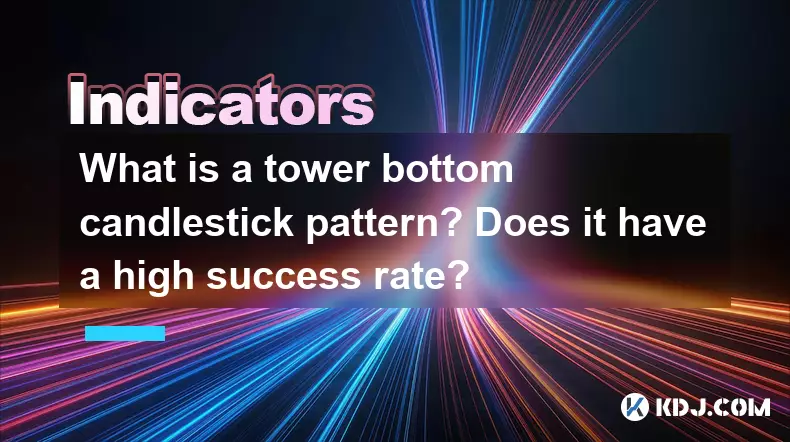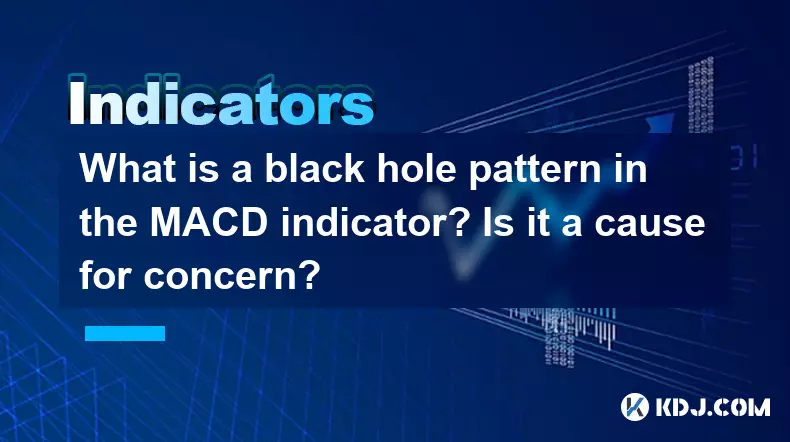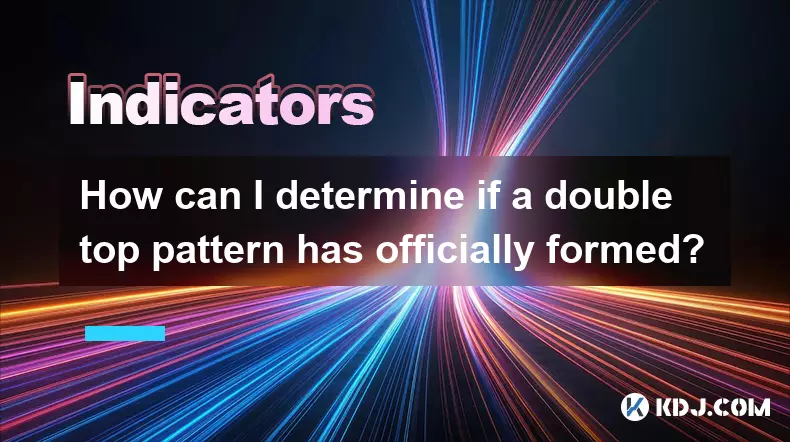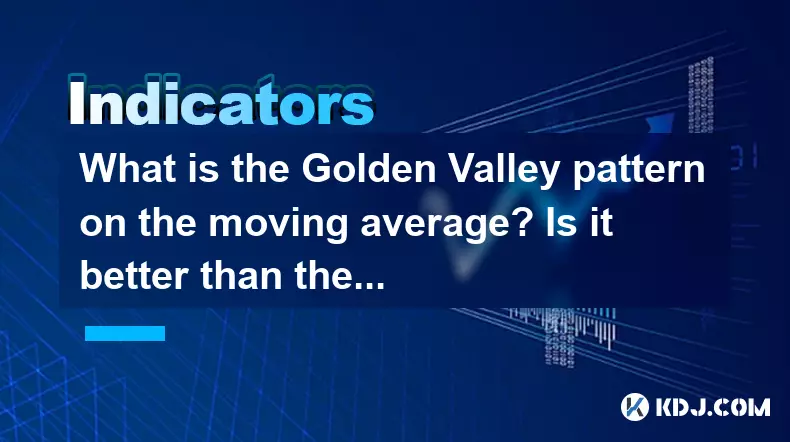-
 bitcoin
bitcoin $122288.232522 USD
0.16% -
 ethereum
ethereum $4480.662914 USD
-0.22% -
 xrp
xrp $2.962747 USD
-2.32% -
 tether
tether $1.000120 USD
-0.05% -
 bnb
bnb $1145.654223 USD
-2.07% -
 solana
solana $227.105217 USD
-1.67% -
 usd-coin
usd-coin $0.999548 USD
-0.02% -
 dogecoin
dogecoin $0.250875 USD
-2.04% -
 tron
tron $0.340654 USD
-0.49% -
 cardano
cardano $0.837968 USD
-2.52% -
 hyperliquid
hyperliquid $48.960449 USD
0.06% -
 chainlink
chainlink $22.049280 USD
-1.33% -
 ethena-usde
ethena-usde $1.000404 USD
0.02% -
 sui
sui $3.586212 USD
0.20% -
 avalanche
avalanche $29.894916 USD
-4.18%
How to use the DMA indicator to identify the deterministic turning point of the medium and long-term trend?
Use the DMA indicator to spot medium and long-term trend turning points in crypto by comparing 10-day and 50-day moving averages for effective trading strategies.
Jun 12, 2025 at 04:29 pm

Using the DMA (Displaced Moving Average) indicator to identify the deterministic turning point of the medium and long-term trend in the cryptocurrency market involves understanding the indicator's mechanics and applying it effectively to your trading strategy. The DMA is a versatile tool that helps traders discern the direction of the trend by comparing a short-term moving average to a longer-term moving average. This article will guide you through the process of using the DMA indicator to pinpoint those crucial turning points in medium and long-term trends.
Understanding the DMA Indicator
The DMA indicator is constructed by plotting two moving averages on a chart: a short-term moving average and a long-term moving average. The most common settings for these moving averages are a 10-day short-term moving average and a 50-day long-term moving average. The difference between these two moving averages is what traders use to determine the trend's direction.
- Short-term Moving Average: Typically set to 10 days, this moving average reacts quickly to price changes.
- Long-term Moving Average: Usually set to 50 days, this moving average provides a smoother, longer-term perspective on the price trend.
When the short-term moving average crosses above the long-term moving average, it suggests a potential bullish trend. Conversely, when the short-term moving average crosses below the long-term moving average, it indicates a potential bearish trend.
Setting Up the DMA Indicator
To set up the DMA indicator on your trading platform, follow these steps:
- Open your trading platform and navigate to the chart of the cryptocurrency you are analyzing.
- Add the DMA indicator to the chart. Depending on your platform, this might be done by selecting 'Indicators' and then searching for 'DMA' or 'Displaced Moving Average.'
- Configure the settings for the DMA. Set the short-term moving average to 10 days and the long-term moving average to 50 days.
- Adjust the displacement if necessary. Displacement shifts the moving averages to the left or right on the chart, which can help in identifying trends more clearly.
Identifying Medium-Term Turning Points
Medium-term trends typically span from a few weeks to a few months. To identify the deterministic turning point of a medium-term trend using the DMA indicator, focus on the following signals:
- Bullish Crossover: When the 10-day moving average crosses above the 50-day moving average, it signals the start of a potential bullish trend. This crossover is a buy signal for medium-term traders.
- Bearish Crossover: Conversely, when the 10-day moving average crosses below the 50-day moving average, it indicates the beginning of a potential bearish trend. This is a sell signal for medium-term traders.
To confirm these turning points, look for additional indicators such as volume spikes or other technical analysis tools like the RSI (Relative Strength Index) or MACD (Moving Average Convergence Divergence).
Identifying Long-Term Turning Points
Long-term trends can last from several months to a year or more. Identifying the deterministic turning point of a long-term trend with the DMA indicator requires patience and a broader perspective on the market.
- Sustained Bullish Trend: A long-term bullish trend is confirmed when the 10-day moving average remains consistently above the 50-day moving average for an extended period. This indicates a strong upward momentum in the market.
- Sustained Bearish Trend: A long-term bearish trend is confirmed when the 10-day moving average remains consistently below the 50-day moving average for an extended period. This indicates a strong downward momentum in the market.
To enhance the reliability of these long-term turning points, consider using higher time frames such as weekly or monthly charts and combining the DMA with fundamental analysis of the cryptocurrency market.
Using the DMA Indicator in Conjunction with Other Tools
While the DMA indicator is powerful on its own, its effectiveness can be significantly increased when used in conjunction with other technical analysis tools. Here are some combinations to consider:
- DMA and RSI: The RSI can help confirm the strength of a trend identified by the DMA. A bullish crossover on the DMA combined with an RSI above 50 can provide a stronger buy signal.
- DMA and MACD: The MACD can provide additional confirmation of trend changes. A bullish crossover on the DMA paired with a bullish MACD crossover can reinforce the buy signal.
- DMA and Volume: Volume spikes can confirm the validity of a trend change indicated by the DMA. A bullish crossover on the DMA accompanied by a significant increase in volume can be a strong indication of a trend reversal.
Practical Example of Using the DMA Indicator
Let's walk through a practical example of using the DMA indicator to identify a medium-term turning point in the price of Bitcoin (BTC).
- Step 1: Open your trading platform and navigate to the daily chart of BTC/USD.
- Step 2: Add the DMA indicator to the chart with the short-term moving average set to 10 days and the long-term moving average set to 50 days.
- Step 3: Observe the chart and look for a bullish crossover where the 10-day moving average crosses above the 50-day moving average.
- Step 4: Confirm the bullish crossover by checking for a volume spike and ensuring that the RSI is above 50.
- Step 5: If all conditions are met, consider entering a long position on BTC/USD.
Frequently Asked Questions
Q1: Can the DMA indicator be used for short-term trading?A1: While the DMA indicator is primarily used for identifying medium and long-term trends, it can be adapted for short-term trading by adjusting the moving average periods to shorter time frames, such as a 5-day short-term moving average and a 20-day long-term moving average. However, short-term trading with the DMA may result in more false signals due to the increased sensitivity to price fluctuations.
Q2: How does the displacement feature of the DMA indicator work?A2: The displacement feature shifts the moving averages to the left or right on the chart. This adjustment can help traders anticipate trend changes by providing a lead or lag in the moving averages. A positive displacement shifts the moving averages to the right, while a negative displacement shifts them to the left. Traders often experiment with different displacement values to find the setting that best suits their trading strategy.
Q3: Is the DMA indicator effective in all market conditions?A3: The effectiveness of the DMA indicator can vary depending on market conditions. In trending markets, the DMA can be very effective in identifying the direction and strength of the trend. However, in choppy or sideways markets, the DMA may produce more false signals, as the moving averages may cross frequently without a clear trend direction. Traders should use the DMA in conjunction with other indicators and market analysis to improve its reliability.
Q4: How can I avoid false signals when using the DMA indicator?A4: To avoid false signals when using the DMA indicator, consider the following strategies:
- Use multiple time frames: Confirm signals on both shorter and longer time frames to ensure the trend's validity.
- Combine with other indicators: Use additional technical indicators like RSI, MACD, and volume to confirm the DMA signals.
- Wait for confirmation: Instead of entering a trade immediately after a crossover, wait for additional confirmation such as a sustained move in the direction of the crossover or a significant volume increase.
Disclaimer:info@kdj.com
The information provided is not trading advice. kdj.com does not assume any responsibility for any investments made based on the information provided in this article. Cryptocurrencies are highly volatile and it is highly recommended that you invest with caution after thorough research!
If you believe that the content used on this website infringes your copyright, please contact us immediately (info@kdj.com) and we will delete it promptly.
- BlockDAG, DOGE, HYPE Sponsorship: Crypto Trends Shaping 2025
- 2025-10-01 00:25:13
- Deutsche Börse and Circle: A StableCoin Adoption Powerhouse in Europe
- 2025-10-01 00:25:13
- BlockDAG's Presale Buzz: Is It the Crypto to Watch in October 2025?
- 2025-10-01 00:30:13
- Bitcoin, Crypto, and IQ: When Genius Meets Digital Gold?
- 2025-10-01 00:30:13
- Stablecoins, American Innovation, and Wallet Tokens: The Next Frontier
- 2025-10-01 00:35:12
- NBU, Coins, and Crypto in Ukraine: A New Yorker's Take
- 2025-10-01 00:45:14
Related knowledge

What is a tower bottom candlestick pattern? Does it have a high success rate?
Sep 22,2025 at 07:18am
Tower Bottom Candlestick Pattern Explained1. The tower bottom candlestick pattern is a reversal formation that typically appears at the end of a downt...

What is a black hole pattern in the MACD indicator? Is it a cause for concern?
Sep 21,2025 at 06:54pm
Bitcoin's Role in Decentralized Finance1. Bitcoin remains the cornerstone of decentralized finance, serving as a benchmark for value and security acro...

How can I use the psychological line (PSY) to determine market sentiment?
Sep 17,2025 at 02:19pm
Understanding the Psychological Line (PSY) in Cryptocurrency TradingThe Psychological Line, commonly referred to as PSY, is a momentum oscillator used...

How can I determine if a double top pattern has officially formed?
Sep 21,2025 at 03:18am
Understanding the Structure of a Double Top Pattern1. A double top pattern consists of two distinct peaks that reach approximately the same price leve...

What is the Golden Valley pattern on the moving average? Is it better than the Silver Valley pattern?
Sep 21,2025 at 02:54pm
Understanding the Golden Valley Pattern in Moving Averages1. The Golden Valley pattern is a technical formation observed in cryptocurrency price chart...

What does a death cross of the RSI in the strong zone (above 50) mean?
Sep 17,2025 at 10:54pm
Understanding the Death Cross in RSI Context1. The term 'death cross' is traditionally associated with moving averages, where a short-term average cro...

What is a tower bottom candlestick pattern? Does it have a high success rate?
Sep 22,2025 at 07:18am
Tower Bottom Candlestick Pattern Explained1. The tower bottom candlestick pattern is a reversal formation that typically appears at the end of a downt...

What is a black hole pattern in the MACD indicator? Is it a cause for concern?
Sep 21,2025 at 06:54pm
Bitcoin's Role in Decentralized Finance1. Bitcoin remains the cornerstone of decentralized finance, serving as a benchmark for value and security acro...

How can I use the psychological line (PSY) to determine market sentiment?
Sep 17,2025 at 02:19pm
Understanding the Psychological Line (PSY) in Cryptocurrency TradingThe Psychological Line, commonly referred to as PSY, is a momentum oscillator used...

How can I determine if a double top pattern has officially formed?
Sep 21,2025 at 03:18am
Understanding the Structure of a Double Top Pattern1. A double top pattern consists of two distinct peaks that reach approximately the same price leve...

What is the Golden Valley pattern on the moving average? Is it better than the Silver Valley pattern?
Sep 21,2025 at 02:54pm
Understanding the Golden Valley Pattern in Moving Averages1. The Golden Valley pattern is a technical formation observed in cryptocurrency price chart...

What does a death cross of the RSI in the strong zone (above 50) mean?
Sep 17,2025 at 10:54pm
Understanding the Death Cross in RSI Context1. The term 'death cross' is traditionally associated with moving averages, where a short-term average cro...
See all articles










































































